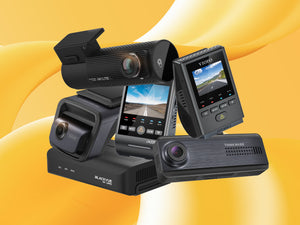Common dash cam installation issues with Mazda vehicles
Common Wiring Issues for Mazda
Owning a Mazda comes with a wide set of perks, but when it comes to some models – particularly the Mazda 3 – you might encounter issues when interacting with its electrical wiring. We have received many inquiries about this, especially from our customers who want to have their dash cams hardwired into their Mazdas, requiring both a constant and accessory connection. This is particularly seen in Mazda 3s released in 2019 onwards.
In this article, we will provide you with our insights on Mazda 3 wiring issues, plus our recommendations on how to install your dash cam properly.
Understanding the Issue
The fundamental issue is the lack of an ACC (Accessory) connection in newer Mazda vehicles such as Mazda 3, Mazda CX30, and Mazda CX50s. This is a problem as dash cams require both a constant power connection, and an accessory connection when hardwiring.
This accessory connection indicates to most cameras when to go into parking mode, a lower power state in which the camera will monitor the voltage of the vehicle battery, and cut off power before draining too much from your car battery. If parking mode is not engaged, most cameras will not monitor the voltage and will draw significantly more power, potentially resulting in a dead car battery.
This even applies to the cigarette socket ports, which stay on when the vehicle is off. Cigarette lighter ports that stay on when the vehicle is off are unusable for a dashcam, as there’s nothing to prevent the camera from fully draining your car battery.
No cigarette lighter adapter plug-and-play connections here.
The interior fusebox of the vehicle is also constantly powered in most situations, which will not help in our search for an ACC connection. Still, it’s always worth checking the fusebox, and using a circuit tester, to verify the nature of the fuses.
The engine fusebox normally has an ACC connection, but wiring to there is quite challenging. More on that later.
Our Dash Cam Installation Tips for Mazda 3s
Try an OBD cable
Consider opting for an OBD (On-Board Diagnostics) cable connection. While Mazda 3 models may lack an internal fuse box, the OBD port can still provide a switched power source. This method is often more convenient, as it eliminates the need for complex wiring and can be accomplished with relative ease. OBD installation is an easy plug and play solution, which still allows all the same features as parking mode, including voltage protection.
The most limiting factor is that OBD installation is only available for certain camera brands with OBD cables, such as Thinkware and IROAD. Learn more about OBD Power Installation here.
Use a dash cam with motion-activated parking mode
Consider a camera that switches to parking mode based on motion. Some cameras do not necessarily require an ACC connection to go into parking mode, as they can determine when the vehicle is not in motion, and after a delay, go into parking mode automatically.
BlackVue dash cams are capable of this, after 5 minutes of the vehicle being idle. This does mean there will be a 5 minute delay before parking mode engages, drawing more power in that window without voltage cut-off, which can be concerned if your vehicle battery is already rather week.
Get it professionally installed with us
Consider speaking to a professional, and having them wire it for you. As the advice below is more complicated, a professional is ideal for the task, and a reputable local car alarm or car electrician should be able to complete the installation. At our shop, we have completed installation into many vehicles with this issue, with no issues. If you are nearby the Richmond area, book an appointment with us here.
While the interior fusebox has no ACC connection, ACC power sources flow through the vehicle, which can be spliced into. Splicing into existing cabling in a vehicle typically involves carefully cutting into the insulation of a wire in the vehicle's electrical system and then connecting another wire to it. It's important to identify the correct wires and use proper techniques to ensure a secure and reliable connection without causing damage to the vehicle's electrical system.
This procedure is more commonly done by professional electricians, and is the option we choose when installing ourselves into one of these vehicles. This should be done only if you have the necessary skillset, as mistakes can potentially damage your electrical system.
Lastly, While the interior fuse box remains constantly powered, the engine fuse box has ACC connections. This will involve wiring through the firewall of the vehicle, which will likely prove more difficult than splicing into existing cabling, but less invasive. Wiring through the firewall involves finding a suitable entry point or rubber grommet to wire through. Since the engine fusebox controls higher amperage functions, this means there’s a higher risk if done improperly.
Disconnecting the battery is often a safe decision to wire to the engine fuse box. When wiring to the engine fusebox, building a relay is a great choice to ensure safety. This should only be attempted by individuals with electrical experience.
We're here to help
And those are some of the installation methods we’ve found! For more generalized advice on installations, check out our dash cam installation hub here.
For more questions, please reach out to our support team here.

